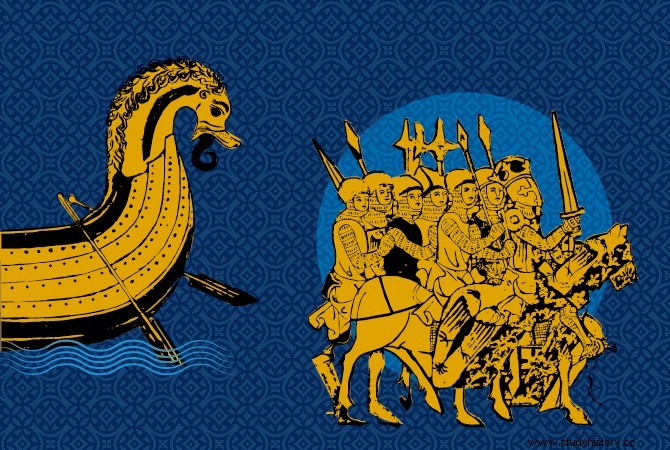
Conversion to Christianity was not a clause of the Treaty of Saint-Clair-sur-Epte, but it constituted, according to Archbishop Francon, the pledge of success:it was for the Vikings the assurance of a stable and definitive peace with the Franks. Dudon briefly exposes the facts, suggesting that this conversion took place quickly and without difficulty.
However, we know for sure from another source that this conversion was long and delicate. In 912-914, Gui, Archbishop of Rouen, no doubt thought that the baptism ceremony would transform the hearts of neophytes. But he quickly realized his mistake. Unable to carry out this conversion of the Vikings, he deemed it useful to seek the help of Hervé, the Archbishop of Reims. His letter has disappeared, but we have preserved the response of Hervé, who took the initiative to consult Pope John X beforehand on this delicate problem of the conversions of pagan masses.
A slow inner journey
This response from Hervé tells us that the baptized Vikings continued to practice their ancestral rites, to sacrifice animals to their deities and to kill Christians. In an attempt to bring these baptized persons back to a life more in keeping with the Christian faith, the clerics of Rouen even decided to rebaptize them, but this did not have the desired effect. In his response, Hervé begins by evoking the history of great conversions, such as those of Constantine and Clovis. He reminds us that baptism is not an acquired fact, but the beginning of a slow interior journey.
Returns to pagan behavior should not be considered as sacrilege deserving a heavy sanction, but as understandable failures in the profound inner transformation that was conversion. It was therefore not necessary to impose too heavy a burden on the new converts. Hervé ended his letter by affirming that it was the Franks who had to "convert first", understanding that the baptism ceremony was only the first stage of a long journey.
